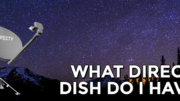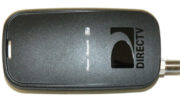When you run tech blogs for over a decade, you realize that eventually, some stories come back. Take for example this one that I wrote in early 2015. Back then, AT&T’s ownership of DIRECTV was still fairly new, and there was a lot of worry about how it would go. Would the telecom giant just close DIRECTV completely and use nothing but its contracts? Would the service be rebranded as “AT&T TV?” It was really hard to read the signs back then.
And so, I laid out my argument.
Back then I said, it’s simple. DIRECTV is a known brand, and the largest name in home-delivered entertainment. AT&T would be foolish to walk away from it. And you know what? I was right. The old logo changed, doing away with what marketing called “The Cyclone Device,” but the name didn’t change. And DIRECTV continued on strong.
The rumor didn’t go away, leading me to address it again two years ago. This was just after the company had launched DIRECTV NOW and the brand was still extremely strong.
And now, we’re back to the same story.
The recent rebranding of DIRECTV NOW to AT&T TV Now has reignited a lot of the same concerns about the DIRECTV name. The naysayers want to say they were right all along, that the DIRECTV name is disappearing. All I can say is, the future is still ahead but for now no one is talking seriously about changing the name of the world’s most popular satellite television service.
Yes, the streaming service is changing. It’s not just the name that’s changing either. In the coming months and years we’ll see it become something quite different, I’m sure of that. There’s been a lot of talk about a dedicated hardware device. But if anything that seems to be more of a replacement for those diehard U-Verse fans rather than a replacement for the satellite product, just my opinion.
And so I will say again, as I have before, that the DIRECTV name is safe. It’s safer than ever now that AT&T has removed the temporary confusion between the streaming product and the satellite product. The streaming product, AT&T TV Now, is more aligned with AT&T Watch, HBO NOW, and the company’s many other streaming properties including the recently announced HBO Max. While they’re all part of the AT&T Entertainment Group, the name change creates some separation between DIRECTV Satellite and the streaming products.
Here’s why that separation is important
First of all, keeping DIRECTV somewhat separate makes sense because marketing plans work differently with different types of customers. It makes sense that DIRECTV would appeal more to older, more established people who have loyalty to the brand. Younger folks may prefer the month-to-month convenience of streaming, but traditional pay-TV is still incredibly dominant among folks over 50.
Second, AT&T has to think about the political climate. Right now, the FCC and FTC (Federal Trade Commission) are very friendly to large media companies. That has not always been the case, and older readers may remember that one of the largest antitrust operations in history involved AT&T. Back in 1982, AT&T was ordered to break up its operations so that local telephone, long distance, manufacturing, networking, and special projects were all separate companies. The country was split into “Baby Bells,” each a local telephone company separate from their one-time corporate parent.
Eventually, those “Baby Bells” coalesced into today’s media giants. The largest group, made up of AT&T Long Distance, SBC, Pacific Telesis, Southwestern Bell, LA Cellular/AT&T Wireless, AT&T Cable, Cingular Wireless, and Southern Bell, came together to form today’s AT&T. Because of the time spent apart, they’re stronger than ever. Sometimes marriages work that way.
While the US Government approved of the reconstitution of AT&T, as well as its purchases of AT&T and TimeWarner, it makes good business sense to keep some buffers between different business groups. Governments change every few years and the last thing AT&T wants is to be the only company ever broken up twice. Certainly there is no concern for that right now but it always makes sense to prepare for multiple possible futures.





